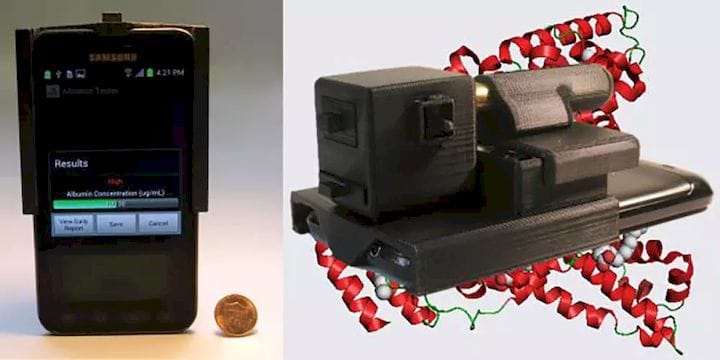
If you’ve been following 3D printing for a while, you may have come across the name Aydogan Ozcan, who has been using the technology for some time at his UCLA lab.
While Ozcan is not focused on additive manufacturing (AM) technology itself, AM has nonetheless been crucial in the researcher’s work to advance microscopy, sensing and diagnostic equipment, which often relyon the computational power of smartphones to reduce the size and cost of devices that have the potential to save lives.
Engineering.com reached out to Ozcan to learn more about his work and the role that 3D printing plays in it.
After receiving a Ph.D. from the Electrical Engineering Department at Stanford University, Ozcan ultimately went on to form the Ozcan Research Group at UCLA. Ozcan himself boasts 37 patents, with 20 more pending, in fields that include telemedicine, fiber optics, nanoscopy and more. He has even received the Presidential Early Career Award for Scientists and Engineers (PECASE), the highest honor that a science or engineering professional can receive from the U.S. government in the early stages of their career.
Once you begin exploring the troves of research hosted on the Research Group’s website, it’s easy to understand why Ozcan is so decorated. He and his team explore a wide range of topics from deep learning and mobile microscopy to flexible and wearable sensors.
The first bit of research that was on our radar back in 2013 was a study titled “Fluorescent Imaging of Single Nanoparticles and Viruses on a Smart Phone” published in ACS Nano. The study detailed the use of a device—consisting of a smartphone, an external lens, color filter, a blue laser diode and a 3D-printed casing—to detect bacteria and viruses.
With this device (weighing less than 70g) fixed to the camera of a Nokia phone, Ozcan and his team were able to detect single particles of human cytomegalovirus (HCMV), which measure many times smaller than the width of a human hair. HCMV can be a high risk for individuals with compromised immune systems, such as those with HIV or organ transplant recipients, as well as infants.
Soon after, in 2014, Ozcan and his lab created another mobile phone-based device for detecting heavy metals in water. Attached to the camera of a Samsung Galaxy II, the device, also contained in a 3D-printed housing, used red and green LEDs, a colorimetric assay to register the presence of mercury in water. A companion Android app then matches the sample against a controlled sample image to determine the mercury concentration, while also making it possible to tag where water samples are collected using the phone’s GPS.
In an interview with engineering.com, Ozcan elaborated on some of the ways in which his lab has been able to build on mobile phone architecture for medical uses:
“Besides mobilephone-based microscopy, the advanced imaging and optoelectronic sensing/sampling technologies embedded in our cellphones have also been utilized for various telemedicine and mobile health-related applications,” Ozcan said. “[These include, but are] not limited to blood analysis and cytometry, detection of bacteria or viruses, diagnosis of infectious diseases, monitoring of chronic patients (e.g., by testing urinary albumin, cholesterol, etc.), sensing of allergens, label-free detection of protein binding events, ultrasound imaging, micro-NMR for molecular analysis of tumor samples, electrochemical detection of parasites, monitoring of electrocardiogram rhythms, estimation of human eye refractive errors as well as detection of cataracts, among many other applications….”
Ozcan pointed out that the increasing power and popularity of mobile phones opens a wide array of possibilities for new technologies, such as those created in his lab. “The massive volume of mobile phone users, which has now reached [over 7] billion, drives the rapid improvements of the hardware, software and high-end imaging and sensing technologies embedded in our phones, transforming the mobile phone into a cost-effective and yet extremely powerful platform to run, for example, biomedical tests, and perform scientific measurements that would normally require advanced laboratory instruments,” Ozcan said.
Read more at ENGINEERING.com











Healthcare 3D printing attempts to solve two problems that plague providing care: customization and cost.